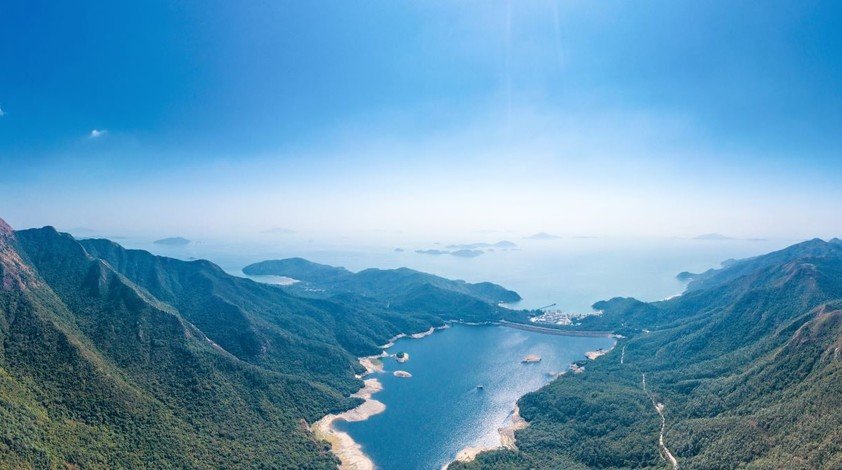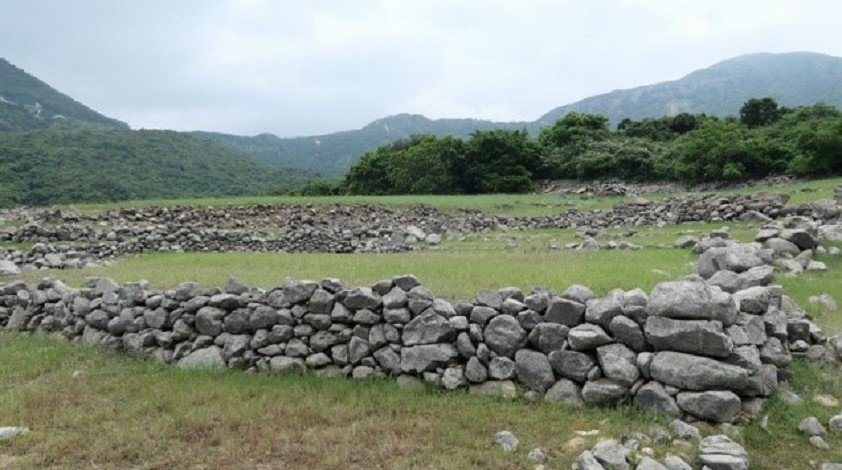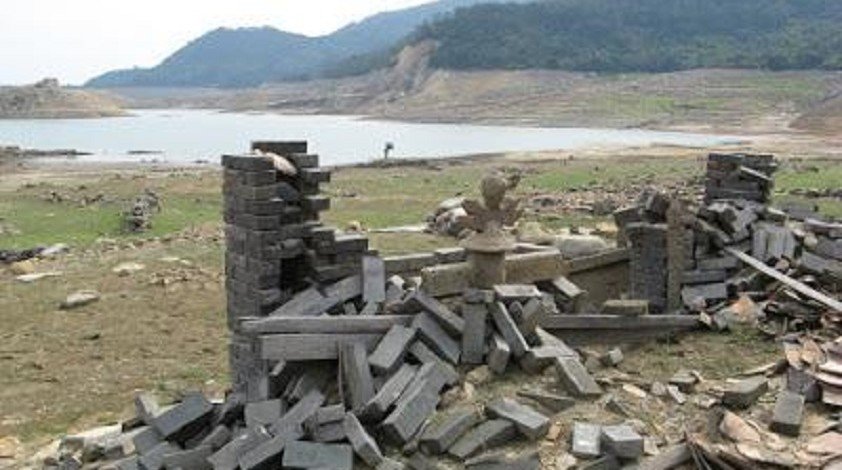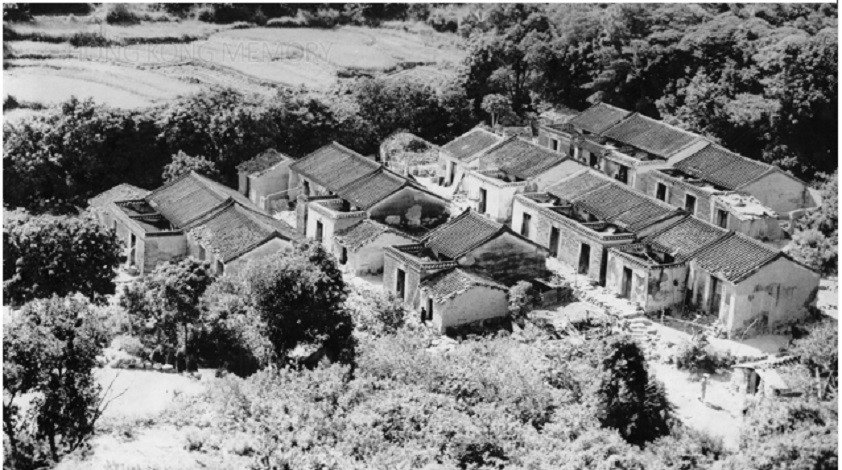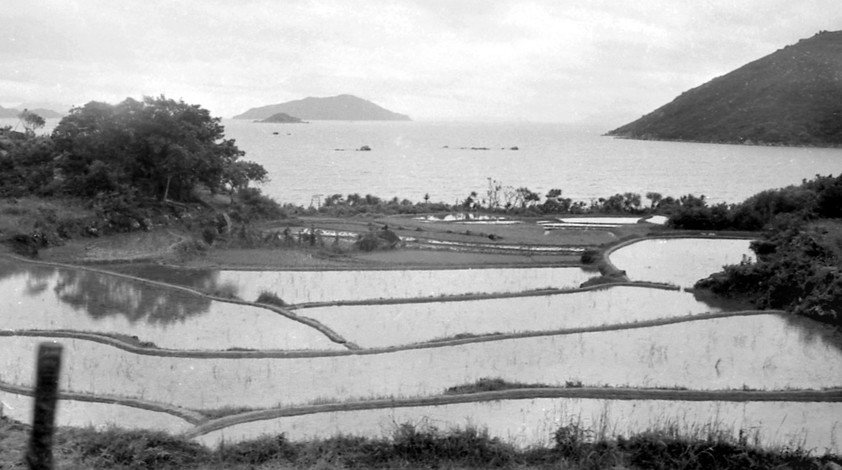discover hkbu
Recreating the underwater villages of Shek Pik
25 Feb 2022
For years the narrative of human history has been written by and about the people living on the land. The stories related to maritime culture and coastal communities were often overlooked in the past, and very few written records exist. However, studies looking into the development of human civilisation have revealed the links and interplay between the cultures of maritime communities and land settlers. In Hong Kong, long before the city became a free port, boat-dwelling communities interacted closely with the villagers on the land, and through the ages, they have handed down many fascinating legends and stories, as well as sites of historical significance.
A team of history scholars from HKBU are now endeavouring to uncover the stories of the land and sea communities in southern China. Through the use of modern technologies such as photogrammetry and heritage information modelling (HIM), the team aim to recreate the now-flooded site where the old villages of Shek Pik are located. The research project intends to facilitate the plans of the Hong Kong Government to focus conservation efforts in the south of Lantau Island, and it can help raise public awareness of the rich cultural heritage of the island and southern China.
Preserving the long history of South Lantau
Lantau Island, the largest island in Hong Kong, offers numerous tourist attractions, but its invaluable heritage and cultural significance are less well known. Led by Professor Chung Po-yin of the Department of History, the HKBU research team are conducting a three-year research study entitled "Legend of Shek Pik - Lantau Stories under Water Project". The study will integrate new technologies and historical research, such as the collection of oral histories, archival records, historical images, videos and 3D computer models, to explore and present the history of Shek Pik.
Situated in a lush valley in the south of Lantau Island, Shek Pik once comprised a cluster of ancient villages and settlements close to mangrove swamps. Villagers made use of terrace farming and most of them were rice farmers. In the village, there was a Hau Wong temple, which is believed to be one of the oldest temples in the region, and former villagers still speak today about the legend of the last Emperor of the Southern Song Dynasty, who fled south to the region.
In the valley by the sea, there was also a mangrove swamps with a big stone. The villagers associated the stone with the local feng shui and named it the "Dragon's Pearl", and it became the landmark where boats used to moor and gather. Along the coast where the river and the sea met was a Tin Hau temple. Back then Shek Pik was an important area in southern China for the provision of water supplies and shelter for boats.
The Shek Pik Village consisted of four smaller villages, namely Shek Pik Tai Tsuen, Fan Pui Tsuen, Kong Pui Tsuen and Hang Tsai Tsuen. In the early 1960s, the Government decided to build a dam and a reservoir in Shek Pik in order to ease the water shortage problems in Hong Kong. Villagers were relocated and their dwellings were inundated by the Shek Pik Reservoir. Before water flooded the area, archaeologists visited the site and discovered a large number of stone tools and pottery fragments, and they estimated that humans had settled and been active in the area since prehistoric times.
Professor Chung's research team are set to provide an accurate record of the Shek Pik site, and they will study the two temples there to further explore the culture and history of Lantau Island. "The Tin Hau temple in Shek Pik Village offers insights into the traditions of floating communities, while the Hau Wong temple illustrates the customs and life of the villagers on the land, and it provides clues about how the legend of the Song Emperor's flight reached southern China," says Professor Chung. "The stories in these temples fill in the gaps in the history of Lantau Island, and they help us trace the migration routes of different cultures and communities."
Using new technology to reassemble the lost villages
Advancements in technology have opened up new possibilities for historical research and heritage conservation. At the bottom of the Shek Pik Reservoir, the ruins of the old villages remain, including the stone walls, roads, old farmhouses and fields. By adopting photogrammetry techniques to scan the ruins – and collecting information from document records, aerial maps, survey maps and oral histories – the research team will be able to estimate the scale, size and layouts of the villages, as well as the exteriors of the temples and village houses. "Although many of the ruins are covered by water, some of the remains would surface during the dry season from March to June each year. We can revisit the outlook, structure and layout of the site through drone photography and scanning techniques," says Professor Chung. "We will also make use of heritage information modelling to build computer models of Shek Pik Village and the beautiful views of its surrounding valley in the virtual world."
The information gained from the project will also bring the old villages to life for visitors in the future. "Through oral history interviews, our researchers have gathered stories from former villagers who personally experienced the relocation of the villages. We can find out the building techniques and materials they used, and the legends and myths about the Shek Pik Valley, which were passed down through the generations," says Professor Chung. "When visitors arrive at the Shek Pik Reservoir, they will be able to see the underwater villages, listen to the voices of the villagers, and understand the life stories of the people who used to live there. With the aid of technology, people can learn more about the culture and history of Hong Kong and southern China."
Breaking new ground in heritage studies
Co-investigators of the research study include Professor Clara Ho, Dr Rebecca Robinson and Dr Kwok Kam-chau of the Department of History, as well as registered architects Mr Tony Chung and Miss Corrin Chan. The team hope that the project will not only preserve the precious history and heritage sites, but also help open up new research areas through the integration of historical studies and new technologies.
According to Professor Chung, while heritage information modelling has been used in Hong Kong to present historical buildings that still exist, the HKBU research team will adopt the technology to recreate a lost historical site, and this will mark a breakthrough in heritage studies. She says, "The different applications of heritage information modelling have great potential for development. By setting a precedent with this project, we hope the Governments of Hong Kong and Guangdong will apply the technology in other locations in the future, and we also aim to facilitate knowledge exchange and transfer with the international community and conservation organisations."
She also says that the rise of innovative technologies, such as the blockchain and non-fungible tokens (NFTs), offers new directions for the development of heritage studies. "When a historical site was demolished, we used to think that it could only be recreated in the form of a virtual museum. But now we can make use of new technologies to explore different possibilities. With the growth of metaverse technology, we believe cultural heritage has the potential to be presented and passed down in brand new forms. The conservation of heritage is venturing into uncharted territory."
